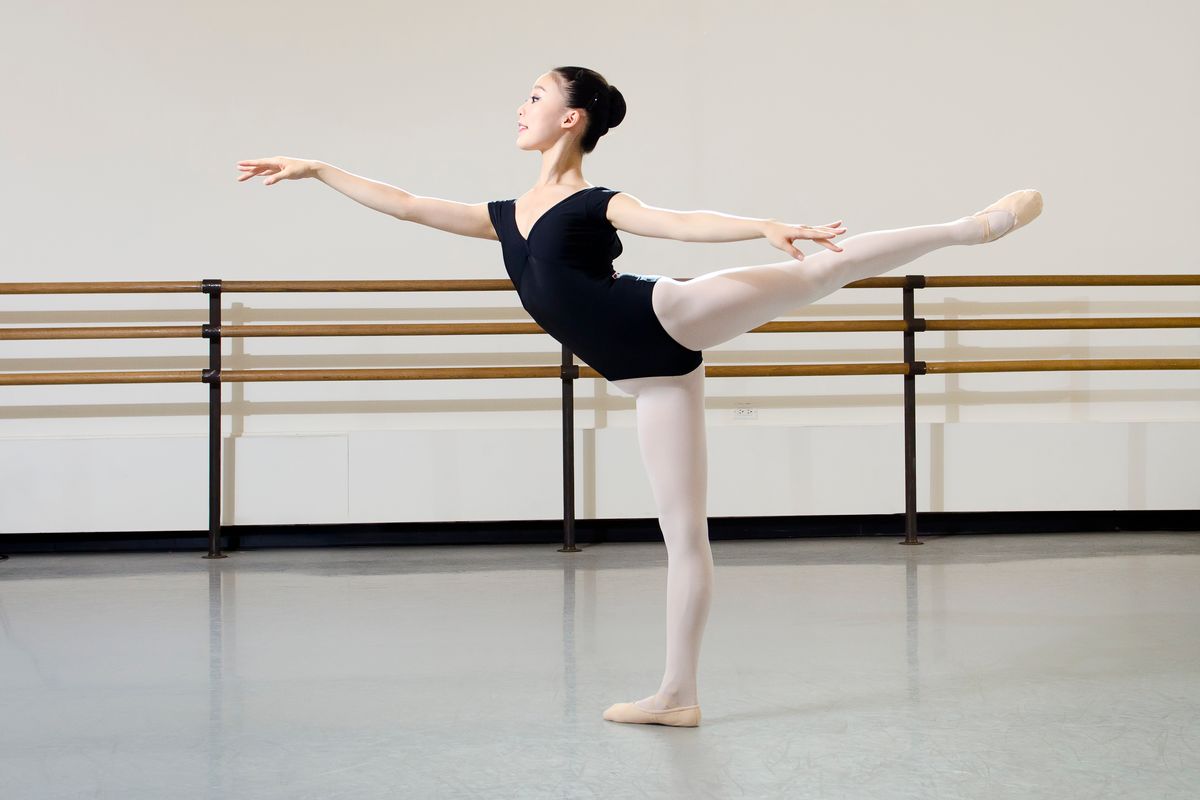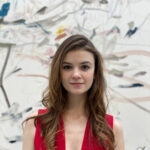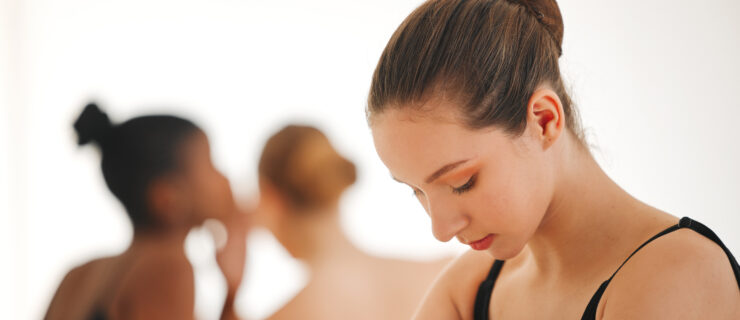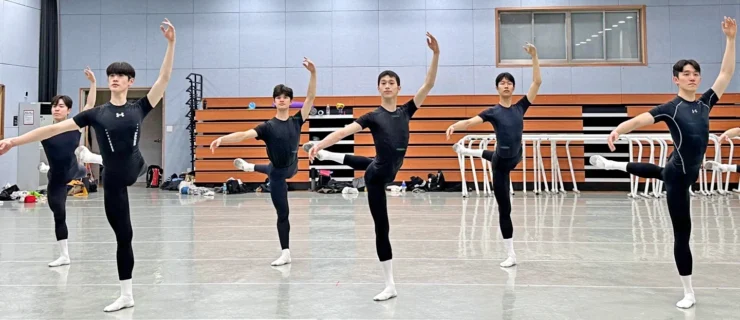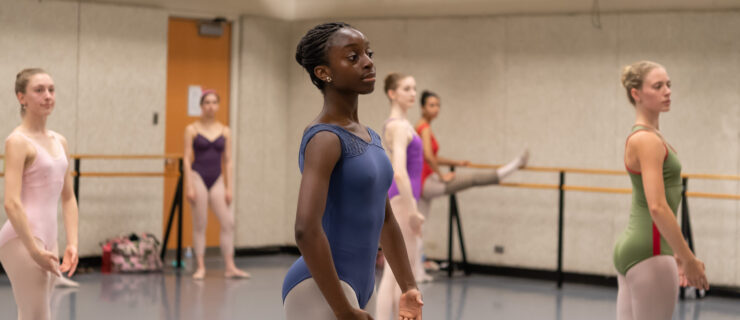Put Your Best Audition Photo Forward: How to Stand Out in 2-D
This story originally appeared in the December 2015/January 2016 issue of Pointe.
My audition photo shoot was less than ideal: The studio was freezing, my photographer friend was a ballet novice and I could hear the clock ticking on our $20-per-hour studio rental. This added to my mounting anxiety that my pictures could help land me a job—or land firmly in a “no” pile. Needless to say, they depicted my stress rather than my best. And when it comes to audition photos, your best is important. Not only will a good audition picture help you stand out, it will also help an interested director recognize you in a stack of resumés.
“Directors need to see your turnout, feet and a nice arabesque,” says former New York City Ballet dancer Kyle Froman, now a professional photographer and founder of StudentAuditionPhotos.com. But you also have to let your artistry shine through those photos. Here are Froman’s tips for impressive, eye-catching prints.
Hire a Pro (or the Next Best Thing)
 Via Burst
Via Burst
The best way to get a great dance shot is to hire an experienced dance photographer. Shooting ballet, Froman says, is very black and white: “There’s a right moment, but 99 percent of the time it’s the wrong moment.” Jumps, particularly, need perfect timing. Someone experienced in both ballet and photography will know exactly when to snap the shot.
If you can’t afford a professional or can’t find one experienced in dance, enlist a friend. In fact, it’s better to hire an amateur who knows ballet over a professional who doesn’t. It saves money, says Froman, and “chances are, they’re going to get something that’s closer to what an employer wants to see.” As for composition and presentation, use the highest-resolution camera you have; shoot with a clean, uncluttered background; pay attention to lighting and exposure (your body should be well lit, but not washed-out) and print on high-quality paper.
Prep Well and Show Your Assets
 Kyle Froman
Kyle Froman
Don’t start with piqués and jumps when your back, calves and everything in between are cold. Take time to warm up properly and grow accustomed to the camera before hitting required poses. These, Froman urges, should highlight your assets: “Minimize your weaknesses unless there’s no other way around it.” Don’t forgo an arabesque shot if a director asks for one specifically, but if your side extension is to your ear, you might be better off with a glorious à la seconde.
Trade Secrets
 Photo tip: Shoot arabesques and jumps from below to boost extension and height. Kyle Froman
Photo tip: Shoot arabesques and jumps from below to boost extension and height. Kyle Froman
“Dancers know what angles are best on them,” Froman says, but he references some camera tricks to help flatter further. For example, a direct profile isn’t the best angle if you’re worried about your turnout. And arabesques and jumps should be shot from below to slightly boost extension and height. A jump six inches in the air will look more impressive than a three-foot jump shot from the wrong angle.
Style Wisely
 Kyle Froman
Kyle Froman
You want to stand out, but never at the cost of professionalism. “A gaudy photo turns people off,” Froman says. “Don’t wear hot pink just to capture somebody’s attention. Let your dancing speak for itself.” In personal styling, err on the side of dressing conservatively. For women, tights and pointe shoes should be ballet pink and leotards should be basic (a tutu is okay, as long as it doesn’t obscure your line). Men should wear a solid-color top with black tights and either black shoes or white socks and white shoes.
The Headshot
 Kyle Froman
Kyle Froman
For headshots, focus on presenting a clean, personable picture. If you’ve chosen to wear your hair down, take those photos first to avoid crimping from hairspray and pins, and use moderate street makeup. (Yes, Froman says, fake eyelashes are too much.)
Shine Through
Towards the end of a photo shoot Froman asks dancers, “When was your best moment onstage?” He’ll have them do an eight-count sequence from their favorite variation and imagine that they’re performing in front of 2,000 people. This helps find the spark: the personality and love of dancing that will bring your technique, facility and potential to life.
The Directors’ Take: Mikko Nissinen
 Mikko Nissinen observes an audition. Courtesy Boston Ballet
Mikko Nissinen observes an audition. Courtesy Boston Ballet
Boston Ballet artistic director Mikko Nissinen looks out for dancers who he may have previously crossed paths with. But he won’t be able to make this connection if your headshot is unrecognizable. “The worst thing is if it’s a glamour shot that looks nothing like you,” Nissinen says. For dance photos, he says, “I’d like to see a shot that they enjoy and I can see their spirit and even some dance in.” This is easier, he thinks, in a performance photo: “Studio shots are often more sterile. But I also understand that a student might not have done Odette/Odile.” Ultimately, he says, “I’m looking for quality dancers. The more quality the picture can represent, if that’s the case in reality, then great.”
The Directors’ Take: Edwaard Liang
 Edwaard Liang demonstrates. Courtesy BalletMet
Edwaard Liang demonstrates. Courtesy BalletMet
For BalletMet artistic director Edwaard Liang, photos don’t have to be “hyper-professional,” but they should be clear and clean—and honest. “If a photo doesn’t capture the essence of your ability and your technique, then I think that’s misleading.” On the other hand, he doesn’t oppose the subtle camera tricks like the kind photographer Kyle Froman suggests. “I think that a smart dancer is more important than anything else. Just like models, they need to know what their best angles are.” For Liang, knowing how to play to your strengths is a strength. If you can work a camera lens, chances are you can do it for an audience.
